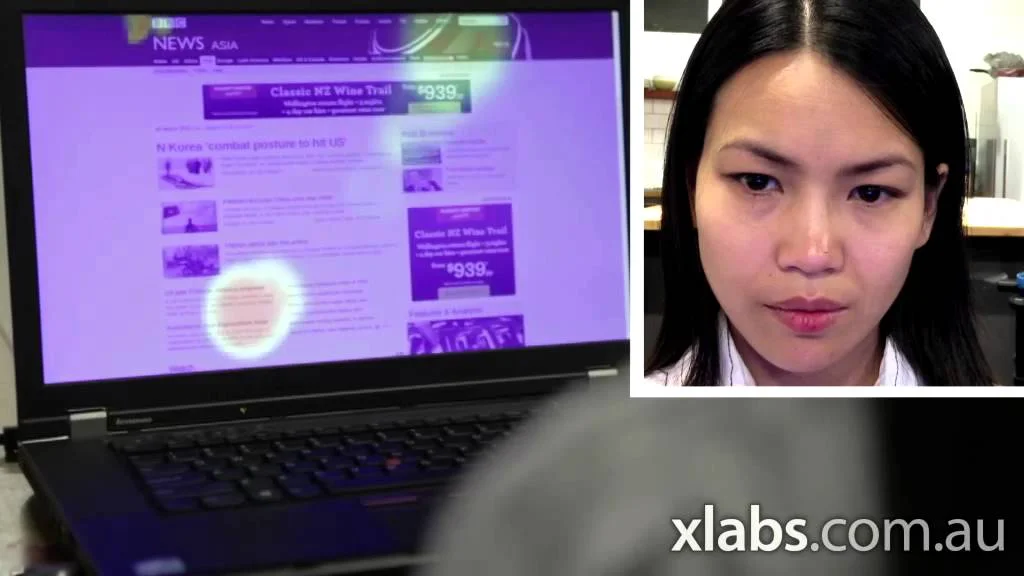What Does a Soccer (Football) Player See?
Description: In this video researchers use eye tracking technology on professional soccer players. The technology is able to track the movements of the participants eyes during different skills and this information is shared with the participants. This technology allows students to see more specifically how information is taken in during sport, and more importantly during life. Students could find patterns in the video or use open source vision tracking software to track their own gaze.
Web Resources: Pilot Dataset Request Form, Tobii Pro Eye Tracking Technology, Eye tracking - Wikipedia, 10 Free Eye Tracking Software Programs [Pros and Cons]
xLabs Eye Gaze Tracking Software
Description: Using this software students can track their gaze using the web camera in a typical laptop. Software like this is used by companies and marketers to determine how humans track information in a program or browse a website. Students can investigate different images and videos and how the brain takes in information for processing and response.
Web Resources: xLabs Chrome Extension, xLabs Gaze Website, 10 Free Eye Tracking Software Programs [Pros and Cons]
Inflation of Moth Coremata
Description: This viral video (with added sound effect) shows an entomologist inflating the coremata in a recently deceased male moth. This pheromone-producing organ will normally sit inside the moth but will be used during courtship to attract potential mates. It is inflated with blood or air. This phenomenon could be used as an example of how organisms increase their change of reproduction through internal and external structures.
Web Resources: Inflatable Moth Butt Featherdusters - Wired, Hair-pencil and coremata - Wikipedia
Synesthesia
Description: Synesthesia can be used as an anchoring phenomenon when designing a unit on the hierarchy of life and sensation. Students find this perceptual phenomenon interesting and to properly understand what is going on they will have to understand a specific living system (the nervous system) in much greater detail than what is presented in the video. Students could even develop a test to determine if they, or their classmates, have synesthesia.
Web Resource: Synesthesia - Wikipedia
Mysterious Glowing Ball
Description: The mysterious glowing ball contains a red, green, and blue LED giving the ball a purple appearance. When the ball is stationary your brain perceives them all as one color. When the ball is spinning your brain can perceive individual LEDs turning on and off. The persistence of vision allows technology like movies possible and is a wonderful phenomenon to use in a unit on vision and light.
Web Resource: Persistence of vision - Wikipedia
Shrew Caravan
Description: Shrews spend most of their lives underground and therefore have very poor eyesight. They rely primarily on their highly developed senses of smell and hearing. When a mother shrew wants to move all of her offspring from one location to another (particularly above ground) each shrew will hold onto the shrew in front forming a long caravan. This could be used as a phenomenon to introduce animal behaviors, especially those of a parent to ensure the safety of their offspring.
Web Resource: Common Shrew - Wikipedia
Can Prairie Dogs Talk?
Description: Biology Professor Con Slobdochikoff and his team have shown that prairie dogs have a complex language for communicating danger from predators. Dogs, badgers, coyotes, and humans all have distinctive calls to alert the other members of the colony. Dr. Slobdochikoff has even shown that these warning calls can have descriptors (e.g. a large human with a green shirt is approaching). This phenomenon can be used to show the advantages of group living as well as information sensation, processing, and behavior / memory formation.
Web Resource: Can Prairie Dogs Talk? - The New York Times







